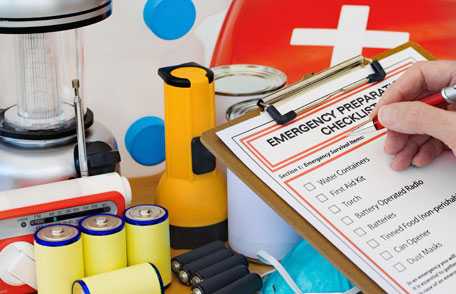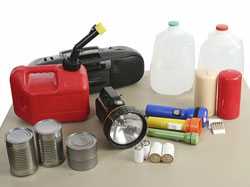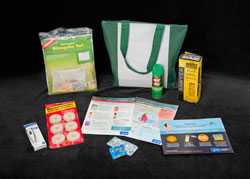Be Ready: Make a Kit
 Making a preparedness kit is one important way you can protect yourself and those around you. Remember that there are many types of emergencies – from those caused by illness to natural disasters – and you need different types of kits for a variety of situations.
Making a preparedness kit is one important way you can protect yourself and those around you. Remember that there are many types of emergencies – from those caused by illness to natural disasters – and you need different types of kits for a variety of situations.
Protect against Zika
With Zika virus (Zika) in the news and mosquito season at its peak in many parts of the country, now is the time to look at how you can prepare against this and other threats. If you live in a state or area with the mosquito that spreads Zika and are concerned about Zika, you can build your own Zika Prevention Kit with the items below. Reducing the risk of Zika is particularly important for pregnant women.
- EPA-registered insect repellent with one of the following ingredients: DEET, picaridin, IR3535, oil of lemon eucalyptus or para-menthane-diol for your skin, and permethrin spray for your clothing and gear.
- A bed net, if the room where you sleep is not well screened.
- Mosquito dunks to kill mosquito larvae in standing water around your house (do not put tabs in water you drink).
- Zika can be sexually transmitted, so use condoms if you have sex with a partner who may have been exposed to Zika.
Learn more about how to put together and use the items in a Zika Prevention Kit, discover what you can do to protect yourself and others, and stay aware of the latest information about the virus.

Prepare an emergency kit for your family to keep them safe and healthy during a disaster.

Build a Zika prevention kit to prepare yourself for Zika.
Protect Your Home and Family
Having an emergency supply kit [6.5 MB] for your home is critical if you need to shelter in place during a tornado or flood or cannot go out to the store during a winter storm. Your kit should include at least a three-day supply of food and one gallon of water per person per day. Remember to include foods that will not spoil and that are easy to make. And don’t forget a manual can opener!
Your home emergency kit should also include—
- A first aid kit
- A flashlight with extra batteries
- A portable charger that can charge a phone without being plugged in
- A battery-powered or crank radio
- Copies of important documents like insurance cards and immunization records
Every member of your family has unique needs. Make sure to keep at least a three-day supply of medications and any other medical supplies that your family members use on a daily basis. If you have young children, be sure to include diapers, bottles, and baby formula or food. Older adults may need a cane, walker, or hearing aids with extra batteries.
Store your supplies in a container that is easy to carry. Label each contain and store them in a spot that is easy to get to. Check the expiration dates on food, water, medicine and batteries at least twice a year.
Don’t Forget about Rover
In an emergency, don’t forget about your pets [171 KB]. They also need food and water (about a gallon per pet) for three days. Make sure you have a sturdy leash, harness, and carrier so you can get your pet to safety. Finally, store your pet’s medicines and medical records in a waterproof container. Know the hotels and shelters in your area that will allow pets, or locate a kennel in a nearby town in case you need to evacuate.
Be sure to keep current photos and descriptions of your pets to help others identify them and prove that they are yours if your pet is lost during or after an emergency.
Hitting the Road
Disaster can strike at any time, including while you’re driving. Keep a basic toolkit in your car that includes pliers, a wrench, and a screwdriver. You should also have a set of jumper cables in case your car won’t start. Keep a cell phone charger and extra batteries in your car, along with a flashlight and battery-powered or crank radio. And don’t forget a first aid kit!
If there’s a chance of snow or ice where you live, don’t forget a windshield scraper, and extra hats, coats, mittens, and blankets.
Leaving on a Jet Plane
Illness could be just a plane ride away, so make sure you’re prepared when you travel [7.83 MB]. Pack prescription and over-the-counter medicines for diarrhea, allergies, motion sickness, and pain or fever. Keep your health insurance cards and copies of your prescriptions handy. Always travel with first aid supplies, and always bring sunscreen and insect repellent along.
Each of us must take responsibility for being ready to handle emergencies and protecting our homes and communities. Do your part: take the time to prepare emergency kits to help keep yourself and others safe and healthy in any situation.
- Page last reviewed: September 27, 2016
- Page last updated: September 27, 2016
- Content source:
- CDC Emergency Risk Communication Branch (ERCB), Division of Emergency Operations (DEO), Office of Public Health Preparedness and Response
- Page maintained by: Office of the Associate Director for Communication, Digital Media Branch, Division of Public Affairs




 ShareCompartir
ShareCompartir